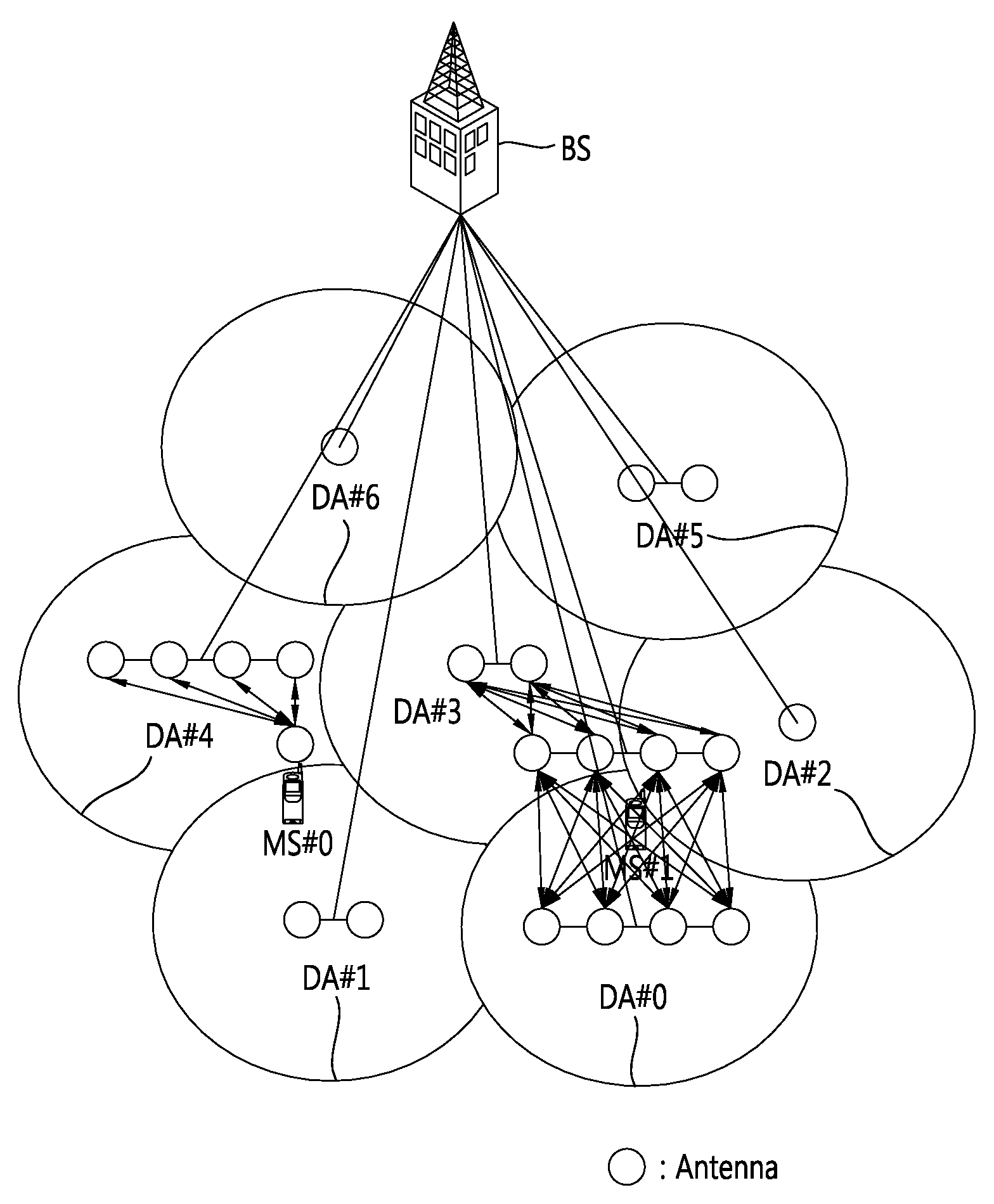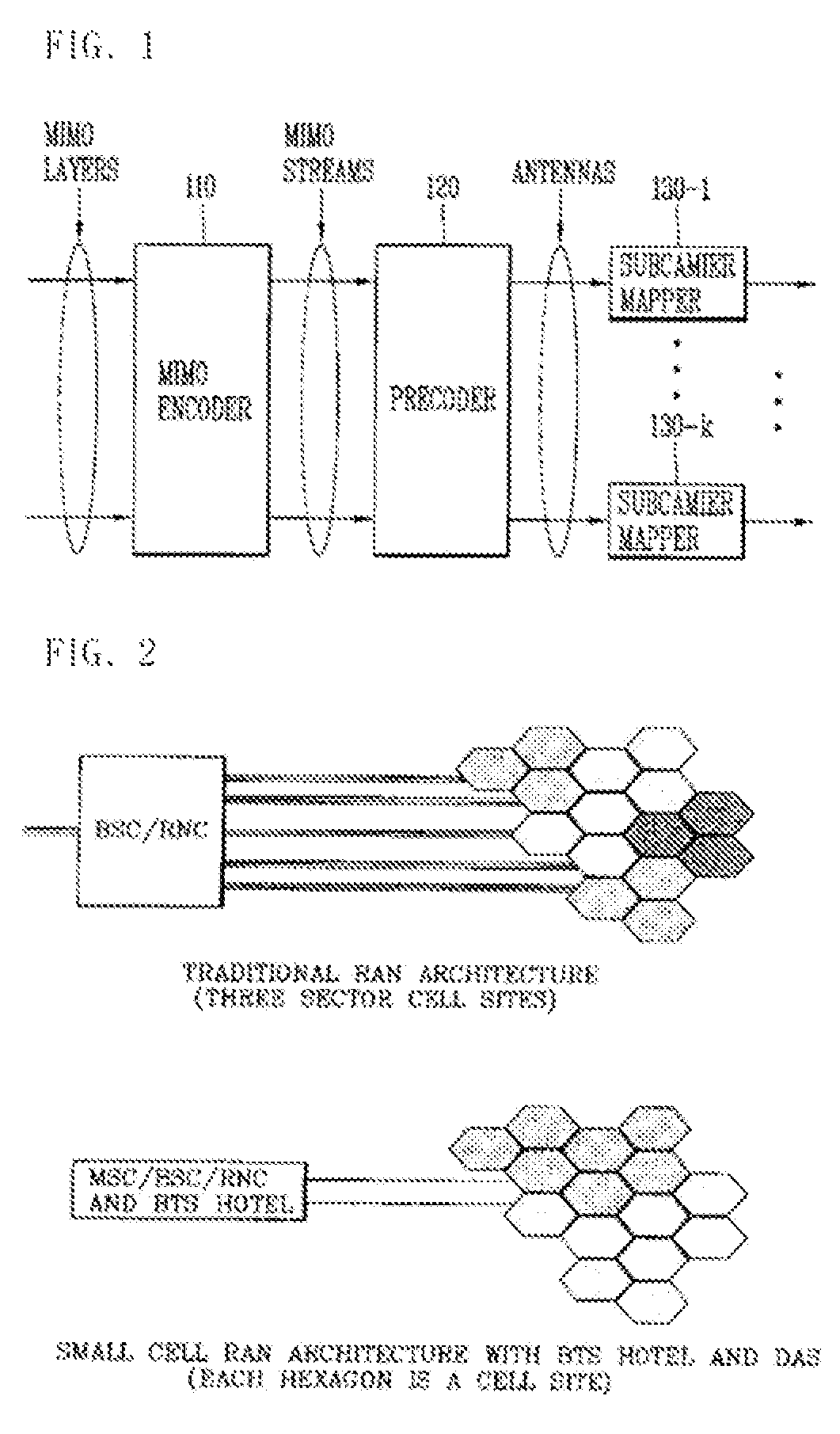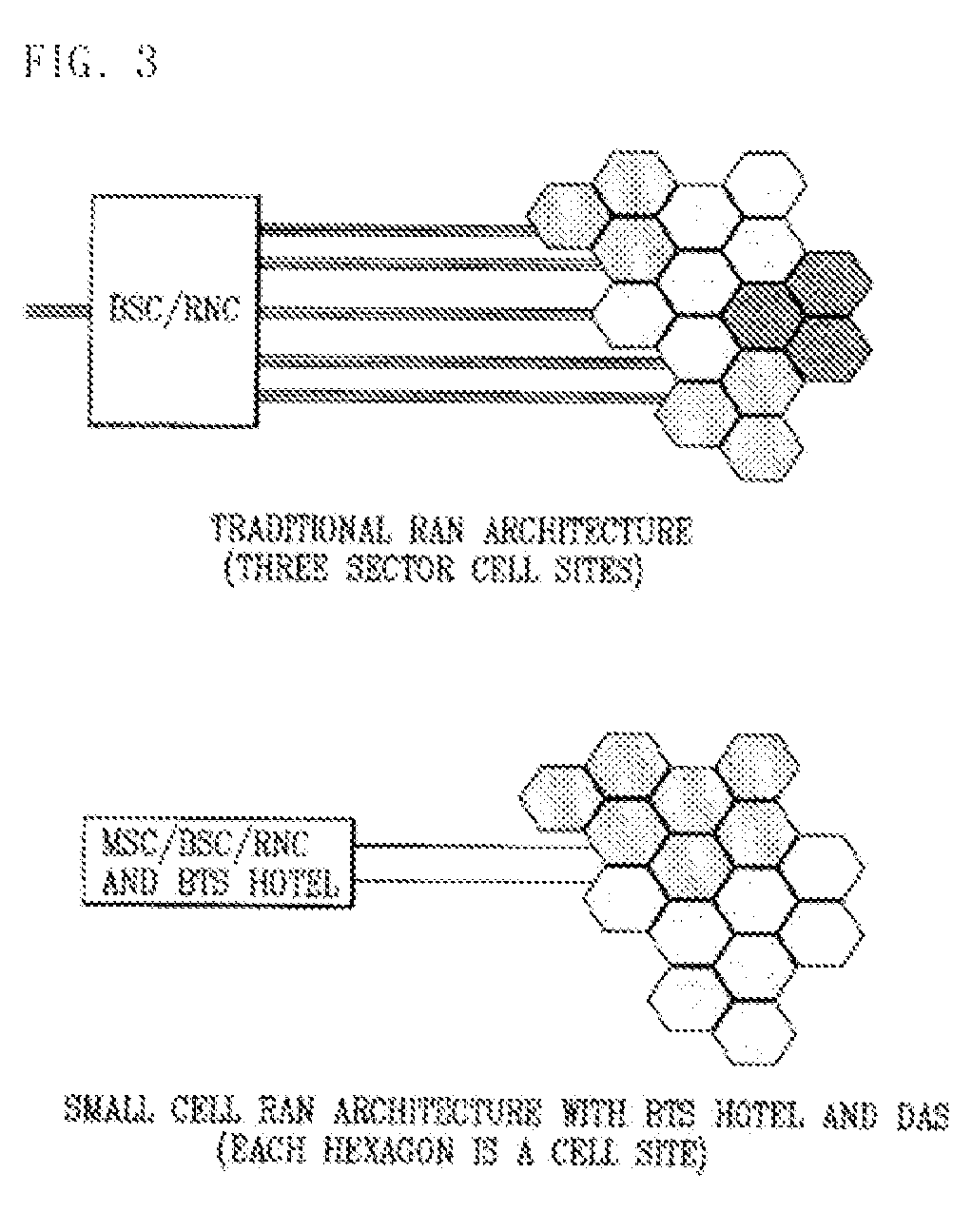Method and apparatus for controlling uplink transmission power
a transmission power and transmission power technology, applied in the field of transmission power control methods, can solve the problems that the power control algorithm and the general cas lack the ability to guarantee the performance of the dmns, and achieve the effect of accurate downlink channel characteristics, accurate uplink transmission power, and reduced calculation complexity of the terminal in calculating uplink transmission power
- Summary
- Abstract
- Description
- Claims
- Application Information
AI Technical Summary
Benefits of technology
Problems solved by technology
Method used
Image
Examples
first embodiment
[0117
[0118]In general, when a mobile station (MS) is connected to a BS via a network, the MS may receive BS antenna information from the BS or obtain BS antenna information through detection of downlink control information.
[0119]Next, the MS measures RSRP, RSSI, and the like, thereof with respect to the BS by using a reference signal with respect to each cell such as a preamble of a downlink frame or MIMO mid-amble, a CRS (Cell-specific Reference Signal), CSI-RS (Channel State Information Reference Signal), and the like, and estimates a propagation loss (path loss).
[0120]The MS may calculate uplink transmission power with respect to target SINR, Target IoT, and the like, by using information regarding a noise and interference level (NI) along with the afore-mentioned information.
[0121]In a DMNS, respective antenna nodes are installed in a distributed manner, so link characteristics between the respective antenna nodes and the MS may be much different. Thus, if a downlink channel is ...
second embodiment
[0152
[0153]A second embodiment of the present disclosure provides a method for calculating uplink transmission power by measuring channel characteristics between respective DAs and a mobile station and determining the number of effective antenna nodes based on the measured channel characteristics in a distributed multi-node system (DMNS).
[0154]Also, the second embodiment of the present disclosure provides a method for calculating uplink transmission power by estimating power of a reference signal received from each DA or each antenna and noise and interference in the DMNS.
[0155]First, a method for determining an effective antenna and DA will be described.
[0156]Determining Effective Antenna and DA
[0157]When it is assumed that a mobile station can discriminate reception power in every antenna level, the mobile station may select an effective antenna by comparing reception power received from each antenna with an effective received power threshold (or an effective reception power level...
third embodiment
[0247
[0248]The third embodiment of the present disclosure provides a method of re-estimating a representative path loss with respect to the entire serving nodes by assigning weight to a downlink path loss estimated for each node.
[0249]Estimation of representative path loss through application of weight
[0250]It is assumed that when M number of nodes are uplink serving nodes with respect to a mobile station, a path loss of each node estimated by the mobile station is P(n)(n=1, . . . , M).
[0251]The mobile station re-estimates a representative path loss P with respect to the entire serving nodes by assigning a weight P(n)(n=1, . . . , M) to an estimated path loss (or an estimated propagation loss) for each node
[0252]P=10log10(∑n=1Mw(n)·10⋀(P(n)10))[dBm][Equation14]
[0253]Here, the weight w(n) may be determined by using at least any one of the following methods.
[0254]Method 1: Method of estimating, by a BS, a path loss based on an uplink reception power distribution of each nod...
PUM
 Login to View More
Login to View More Abstract
Description
Claims
Application Information
 Login to View More
Login to View More - R&D
- Intellectual Property
- Life Sciences
- Materials
- Tech Scout
- Unparalleled Data Quality
- Higher Quality Content
- 60% Fewer Hallucinations
Browse by: Latest US Patents, China's latest patents, Technical Efficacy Thesaurus, Application Domain, Technology Topic, Popular Technical Reports.
© 2025 PatSnap. All rights reserved.Legal|Privacy policy|Modern Slavery Act Transparency Statement|Sitemap|About US| Contact US: help@patsnap.com



